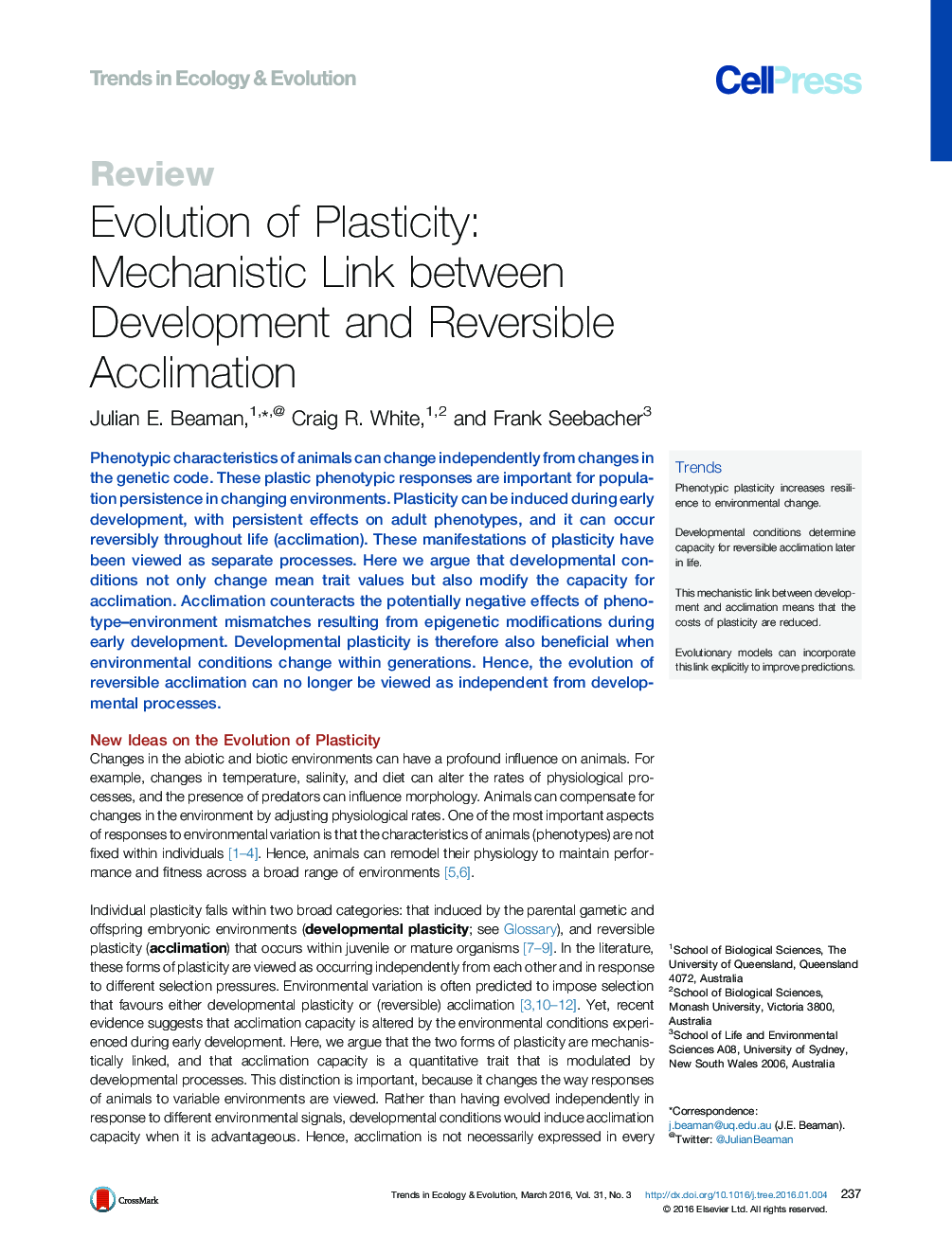| کد مقاله | کد نشریه | سال انتشار | مقاله انگلیسی | نسخه تمام متن |
|---|---|---|---|---|
| 142307 | 163096 | 2016 | 13 صفحه PDF | دانلود رایگان |
Phenotypic characteristics of animals can change independently from changes in the genetic code. These plastic phenotypic responses are important for population persistence in changing environments. Plasticity can be induced during early development, with persistent effects on adult phenotypes, and it can occur reversibly throughout life (acclimation). These manifestations of plasticity have been viewed as separate processes. Here we argue that developmental conditions not only change mean trait values but also modify the capacity for acclimation. Acclimation counteracts the potentially negative effects of phenotype–environment mismatches resulting from epigenetic modifications during early development. Developmental plasticity is therefore also beneficial when environmental conditions change within generations. Hence, the evolution of reversible acclimation can no longer be viewed as independent from developmental processes.
TrendsPhenotypic plasticity increases resilience to environmental change.Developmental conditions determine capacity for reversible acclimation later in life.This mechanistic link between development and acclimation means that the costs of plasticity are reduced.Evolutionary models can incorporate this link explicitly to improve predictions.
Journal: - Volume 31, Issue 3, March 2016, Pages 237–249
